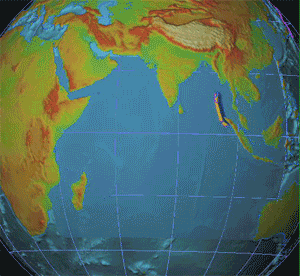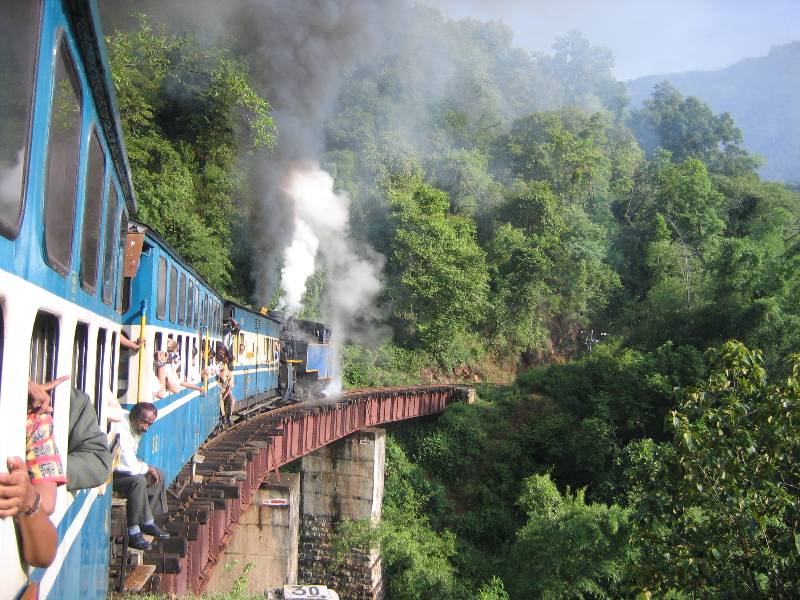|
Slowness (seismology)
Slowness (s) is a quantity introduced in Seismology which is the reciprocal of velocity. Thus travel time of a wave is the distance that the wave travels times the slowness of the medium ( in seismology, it refers to different layers of Earth exhibiting different densities) Thus, Slowness = 1/Velocity If we divide the path followed by the ray into N segments numbered i = 1, 2 .. N the total travel time of the wave is \Gamma = \sum_^ s_ \Delta x_ Therefore, the residual travel time is due to departures in slowness experienced by the wave along the raypath. Sonic well logs Measurements of interval transit time, designated t, made during wireline logging are used to determine sonic velocities of the wallrock in borehole A borehole is a narrow shaft bored in the ground, either vertically or horizontally. A borehole may be constructed for many different purposes, including the extraction of water ( drilled water well and tube well), other liquids (such as petr ...s. The tool ... [...More Info...] [...Related Items...] OR: [Wikipedia] [Google] [Baidu] |
Seismology
Seismology (; from Ancient Greek σεισμός (''seismós'') meaning "earthquake" and -λογία (''-logía'') meaning "study of") is the scientific study of earthquakes (or generally, quakes) and the generation and propagation of elastic waves through planetary bodies. It also includes studies of the environmental effects of earthquakes such as tsunamis; other seismic sources such as volcanoes, plate tectonics, glaciers, rivers, oceanic microseisms, and the atmosphere; and artificial processes such as explosions. Paleoseismology is a related field that uses geology to infer information regarding past earthquakes. A recording of Earth's motion as a function of time, created by a seismograph is called a seismogram. A seismologist is a scientist who works in basic or applied seismology. History Scholarly interest in earthquakes can be traced back to antiquity. Early speculations on the natural causes of earthquakes were included in the writings of Thales of Miletu ... [...More Info...] [...Related Items...] OR: [Wikipedia] [Google] [Baidu] |
Multiplicative Inverse
In mathematics, a multiplicative inverse or reciprocal for a number ''x'', denoted by 1/''x'' or ''x''−1, is a number which when Multiplication, multiplied by ''x'' yields the multiplicative identity, 1. The multiplicative inverse of a rational number, fraction ''a''/''b'' is ''b''/''a''. For the multiplicative inverse of a real number, divide 1 by the number. For example, the reciprocal of 5 is one fifth (1/5 or 0.2), and the reciprocal of 0.25 is 1 divided by 0.25, or 4. The reciprocal function, the Function (mathematics), function ''f''(''x'') that maps ''x'' to 1/''x'', is one of the simplest examples of a function which is its own inverse (an Involution (mathematics), involution). Multiplying by a number is the same as Division (mathematics), dividing by its reciprocal and vice versa. For example, multiplication by 4/5 (or 0.8) will give the same result as division by 5/4 (or 1.25). Therefore, multiplication by a number followed by multiplication by its reciprocal yie ... [...More Info...] [...Related Items...] OR: [Wikipedia] [Google] [Baidu] |
Velocity
Velocity is a measurement of speed in a certain direction of motion. It is a fundamental concept in kinematics, the branch of classical mechanics that describes the motion of physical objects. Velocity is a vector (geometry), vector Physical quantity, quantity, meaning that both magnitude and direction are needed to define it. The Scalar (physics), scalar absolute value (Magnitude (mathematics), magnitude) of velocity is called , being a coherent derived unit whose quantity is measured in the International System of Units, SI (metric system) as metres per second (m/s or m⋅s−1). For example, "5 metres per second" is a scalar, whereas "5 metres per second east" is a vector. If there is a change in speed, direction or both, then the object is said to be undergoing an ''acceleration''. Definition Average velocity The average velocity of an object over a period of time is its Displacement (geometry), change in position, \Delta s, divided by the duration of the period, \Delt ... [...More Info...] [...Related Items...] OR: [Wikipedia] [Google] [Baidu] |
Earth
Earth is the third planet from the Sun and the only astronomical object known to Planetary habitability, harbor life. This is enabled by Earth being an ocean world, the only one in the Solar System sustaining liquid surface water. Almost all of Earth's water is contained in its global ocean, covering Water distribution on Earth, 70.8% of Earth's crust. The remaining 29.2% of Earth's crust is land, most of which is located in the form of continental landmasses within Earth's land hemisphere. Most of Earth's land is at least somewhat humid and covered by vegetation, while large Ice sheet, sheets of ice at Polar regions of Earth, Earth's polar polar desert, deserts retain more water than Earth's groundwater, lakes, rivers, and Water vapor#In Earth's atmosphere, atmospheric water combined. Earth's crust consists of slowly moving tectonic plates, which interact to produce mountain ranges, volcanoes, and earthquakes. Earth's outer core, Earth has a liquid outer core that generates a ... [...More Info...] [...Related Items...] OR: [Wikipedia] [Google] [Baidu] |
Density
Density (volumetric mass density or specific mass) is the ratio of a substance's mass to its volume. The symbol most often used for density is ''ρ'' (the lower case Greek letter rho), although the Latin letter ''D'' (or ''d'') can also be used: \rho = \frac, where ''ρ'' is the density, ''m'' is the mass, and ''V'' is the volume. In some cases (for instance, in the United States oil and gas industry), density is loosely defined as its weight per unit volume, although this is scientifically inaccurate this quantity is more specifically called specific weight. For a pure substance, the density is equal to its mass concentration. Different materials usually have different densities, and density may be relevant to buoyancy, purity and packaging. Osmium is the densest known element at standard conditions for temperature and pressure. To simplify comparisons of density across different systems of units, it is sometimes replaced by the dimensionless quantity "relative den ... [...More Info...] [...Related Items...] OR: [Wikipedia] [Google] [Baidu] |
Wave
In physics, mathematics, engineering, and related fields, a wave is a propagating dynamic disturbance (change from List of types of equilibrium, equilibrium) of one or more quantities. ''Periodic waves'' oscillate repeatedly about an equilibrium (resting) value at some frequency. When the entire waveform moves in one direction, it is said to be a travelling wave; by contrast, a pair of superposition principle, superimposed periodic waves traveling in opposite directions makes a ''standing wave''. In a standing wave, the amplitude of vibration has nulls at some positions where the wave amplitude appears smaller or even zero. There are two types of waves that are most commonly studied in classical physics: mechanical waves and electromagnetic waves. In a mechanical wave, Stress (mechanics), stress and Strain (mechanics), strain fields oscillate about a mechanical equilibrium. A mechanical wave is a local deformation (physics), deformation (strain) in some physical medium that propa ... [...More Info...] [...Related Items...] OR: [Wikipedia] [Google] [Baidu] |
Travel
Travel is the movement of people between distant geographical Location (geography), locations. Travel can be done by Pedestrian, foot, bicycle, automobile, train, boat, bus, airplane, ship or other means, with or without Baggage, luggage, and can be one way or round trip. Travel can also include relatively short stays between successive movements, as in the case of tourism. Etymology The origin of the word "travel" is most likely lost to history. The term "travel" may originate from the Old French word ''travail'', which means 'work'. According to the Merriam-Webster dictionary, the first known use of the word ''travel'' was in the 14th century. It also states that the word comes from Middle English , (which means to torment, labor, strive, journey) and earlier from Old French (which means to work strenuously, toil). In English, people still occasionally use the words , which means struggle. According to Simon Winchester in his book ''The Best Travelers' Tales (2004)'', ... [...More Info...] [...Related Items...] OR: [Wikipedia] [Google] [Baidu] |
Well Logging
Well logging, also known as borehole logging is the practice of making a detailed record (a ''well log'') of the geologic formations penetrated by a borehole. The log may be based either on visual inspection of samples brought to the surface (''geological'' logs) or on physical measurements made by instruments lowered into the hole (''geophysical'' logs). Some types of geophysical well logs can be done during any phase of a well's history: drilling, completing, producing, or abandoning. Well logging is performed in boreholes drilled for the oil and gas, groundwater, mineral and geothermal exploration, as well as part of environmental, scientific and geotechnical studies. Wireline logging Different industries, as mining, oil and gas uses wireline logging to obtain a continuous record of a formation's rock properties, also, groundwater consultants. Wireline logging can be defined as being "The acquisition and analysis of geophysical data performed as a function of well b ... [...More Info...] [...Related Items...] OR: [Wikipedia] [Google] [Baidu] |
Borehole
A borehole is a narrow shaft bored in the ground, either vertically or horizontally. A borehole may be constructed for many different purposes, including the extraction of water ( drilled water well and tube well), other liquids (such as petroleum), or gases (such as natural gas). It may also be part of a geotechnical investigation, environmental site assessment, mineral exploration, temperature measurement, as a pilot hole for installing piers or underground utilities, for geothermal installations, or for underground storage of unwanted substances, e.g. in carbon capture and storage. Importance Engineers and environmental consultants use the term ''borehole'' to collectively describe all of the various types of holes drilled as part of a geotechnical investigation or environmental site assessment (a so-called Phase II ESA). This includes holes advanced to collect soil samples, water samples or rock cores, to advance ''in situ'' sampling equipment, or to install monitor ... [...More Info...] [...Related Items...] OR: [Wikipedia] [Google] [Baidu] |
Seismological Society Of America
The Seismological Society of America (SSA) is an international Learned society, scientific society devoted to the advancement of seismology and the understanding of earthquakes for the benefit of society. Founded in 1906, the society has members throughout the world representing seismologists and other geophysicists, geologists, engineers, insurers, and policy-makers in preparedness and safety. History The society was established by academic, government, and other scientific and engineering professionals in the months following the April 18th 1906 San Francisco earthquake, San Francisco earthquake, with the first meeting of the Board of Directors taking place on December 1, 1906. Publications The Seismological Society of America publishes the ''Bulletin of the Seismological Society of America'' (''BSSA''), a journal of research in earthquake seismology and related disciplines since 1911, and ''Seismological Research Letters'' (''SRL''), which serves as a forum for informal co ... [...More Info...] [...Related Items...] OR: [Wikipedia] [Google] [Baidu] |






